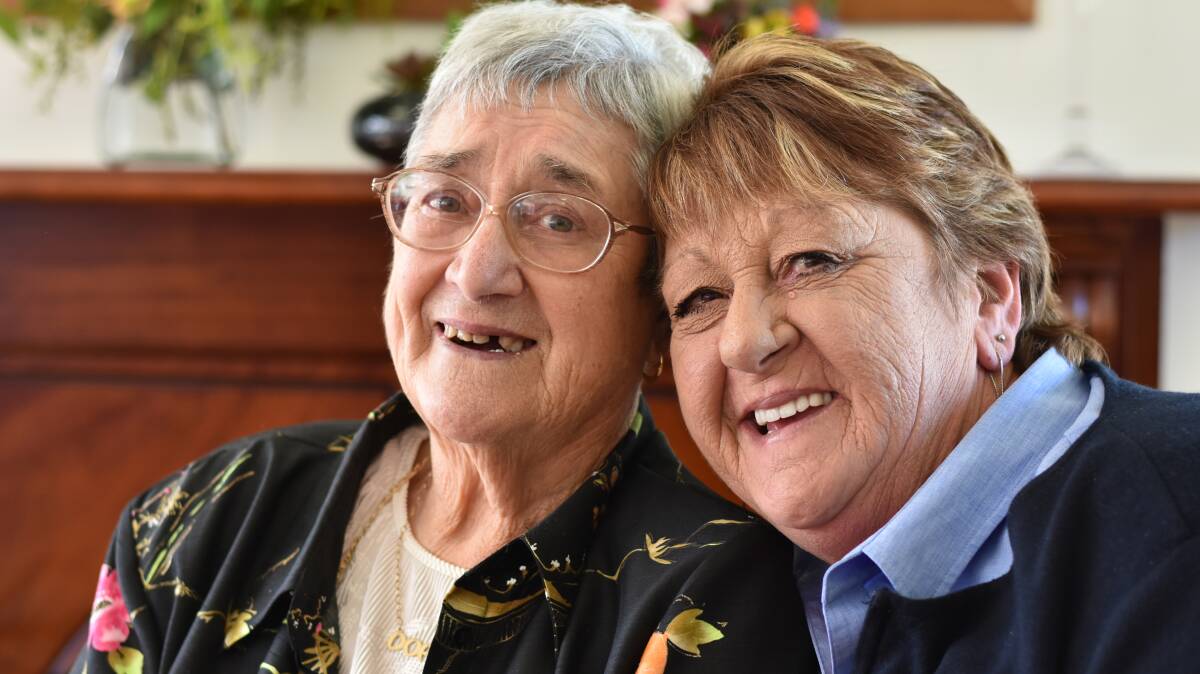
When Agnes McLaren, aged three, first arrived in Warrnambool in 1966, she had no idea her family would make the seaside town their home for generations to come.
Subscribe now for unlimited access.
or signup to continue reading
The cheeky, playful girl from Belfast arrived at the Merri Street Railway Station with nothing more than her sibling, parents, and the family’s one well-travelled trunk.
It was the Woollen Mill’s illuminated-blanket sign that the now 54-year-old recalls years later.
“That was the first sign that we knew we were in Warrnambool,” she said.
Waiting to be collected by a member of the Presbyterian Church, Agnes, her brother David, mother Dora and father David Francis Adair, had limited understanding of what their migration to the shipwreck coast would entail.
Her family were fleeing a war-torn Northern Ireland, travelling to a destination her father had dreamed of since he’d worked for the Country Roads Board (CRB) years earlier.
Agnes recalls her father saying “if I ever meet someone and marry, I’m going to live in Australia”, so he did. He wanted to leave all that hatred behind.”
Her father paid 10 pounds and sailed for 33 days with his young family across more than 10,000 miles of sea on board the Castel Felice migrant ship.
Their first home was a two-bedroom flat near Lady Bay. With no car, her dad walked the three kilometres to his job with Warrnambool Borough Council.
Their fresh start in south-west Victoria was one Agnes said began with limited resources.
“I remember everything was limited,” she said.
“We would have a boiled egg for a meal and we’d cut the top off it so mum would have the top and we would have the rest.”
The family home was confined, and bathing was a luxury. They relied on overseas mail to keep in touch with more than two dozen family members they had left behind.
“Granny would send us comics and The Belfast Telly (Telegraph) for mum,” Agnes recalls. “And she’d always send dullus, which was dried seaweed.”
The family had left religious segregation behind and it was the people Agnes met when she first arrived that have left an indelible mark on her.
“The South Warrnambool community was very, very good to us, they accepted us and we made a lot of life-long friends there,” she said.
As the years went by Agnes said her family adjusted to the Australian way of life. Yet she was desperate to blend in with her new community.
“I remember getting laughed at at school” she said. “Mainly because of the way I spoke. I had a broad accent.”
“I put a lot of effort in to talk like everybody else did. I lost my accent pretty quick.”
Agnes said her parents struggled to integrate because multiculturalism was new to Warrnambool.
“We were one of the first families the Presbyterian Church got out to Australia,” she said.
“There was never any violence, just kids making fun because you were different. But when I was in primary school the kids loved hanging around because they loved the way mum and dad spoke.”
As more Irish migrants began to arrive in the seaside town, Agnes said her family extended their generosity.
“Every time someone Irish arrived in Warrnambool the community would greet them and take them food, and clothes, and whatever they needed,” she said.
“And we’d meet every year at Killarney. It was called the ‘Irish Picnic’.”
Agnes continues to make Irish soda bread and dress up for St Patrick’s Day for the residents at Lyndoch Living where she works as a lifestyle facilitator.
Acceptance is a priority Agnes has always valued.
“It’s what’s on the inside that counts,” she said. “You can’t judge a book by it’s cover.
“We might look all squeaky clean on the outside and well-dressed but might be battling something on the inside.
“You’ve gotta get to know people and accept them for who they are and not what you think they should be.”
For new migrants choosing to settle in Warrnambool, Agnes’ advice is simple.
“To be accepted I think you need to mingle and get involved in your local community not isolate within your own. Share your culture – if people learn’t more about your culture they’d understand better.”
Witnessing the growth and development of Warrnambool over the years offers a sense of sentimentality for Agnes.
Forty years after his death she remains proud of her father’s involvement in the city’s infrastructure who’s work at the council laid the foundations for what is now Lake Pertobe.
“He died before he got to see it finished,” she said. “It was this big thing that was going to happen,..but he died of a heart attack. He was only 47. That was something grand for Warrnambool that he never saw completed.”















